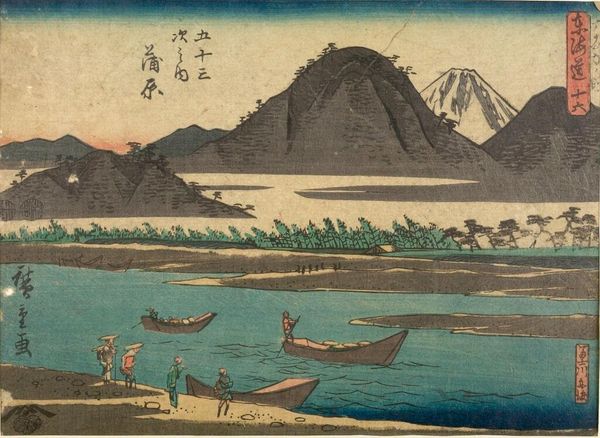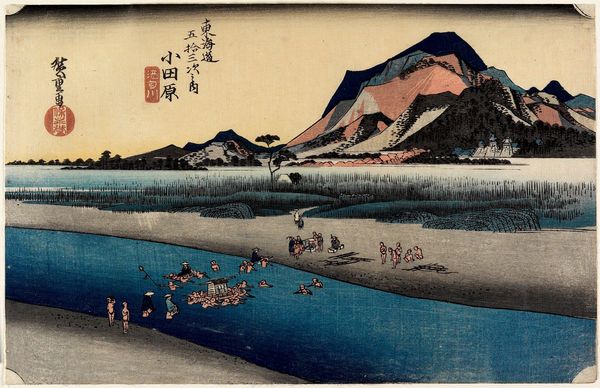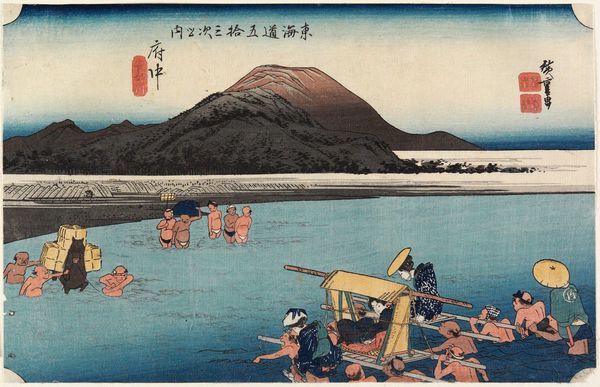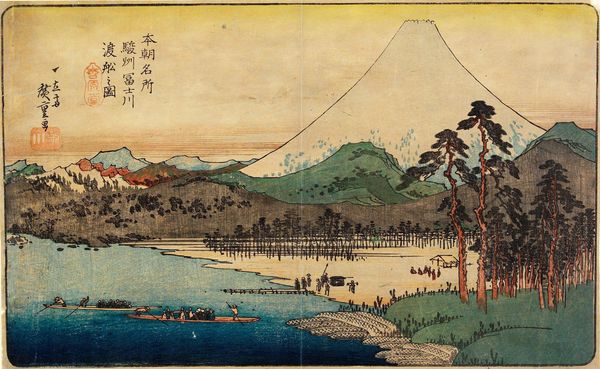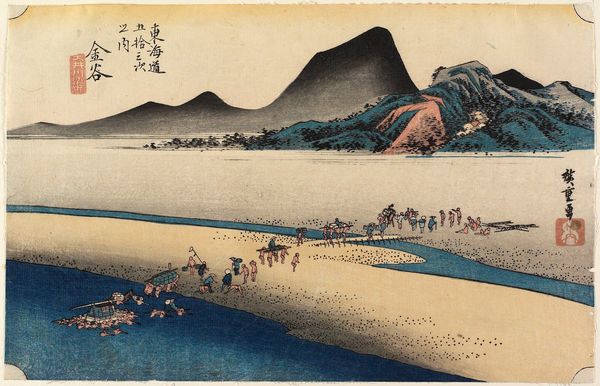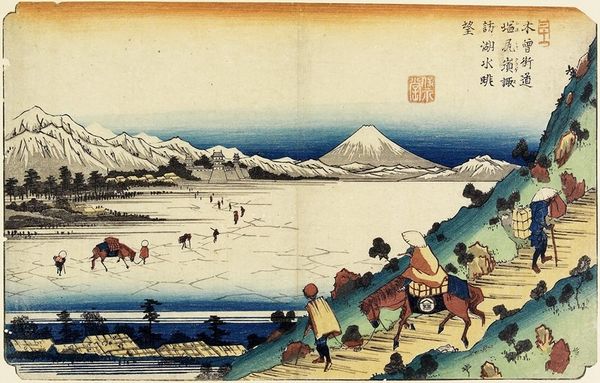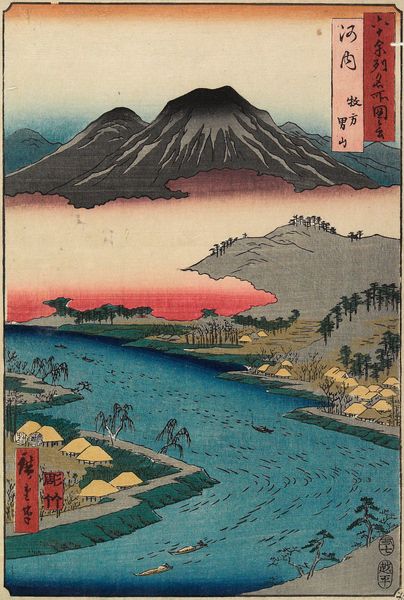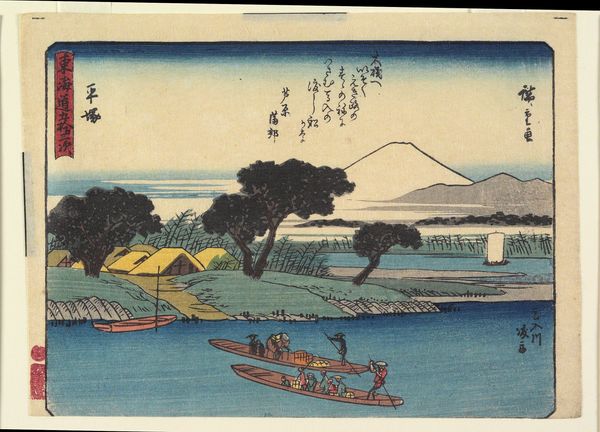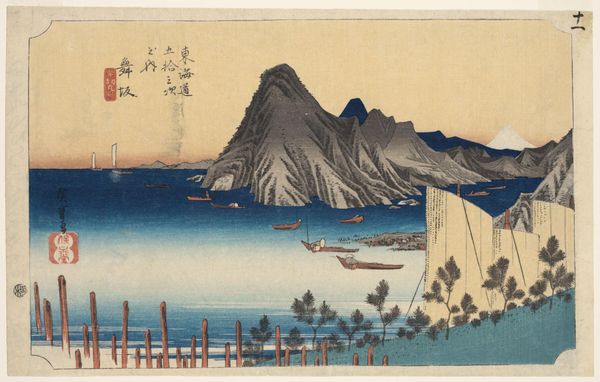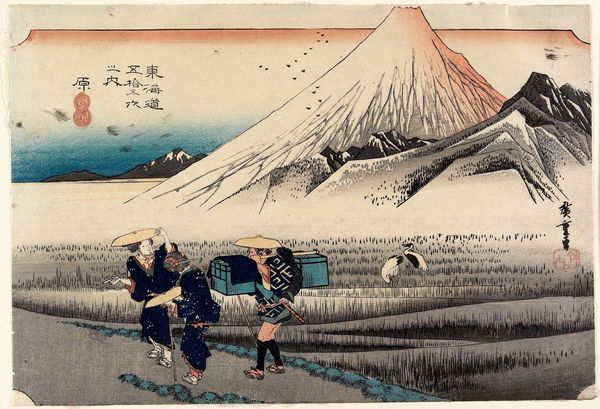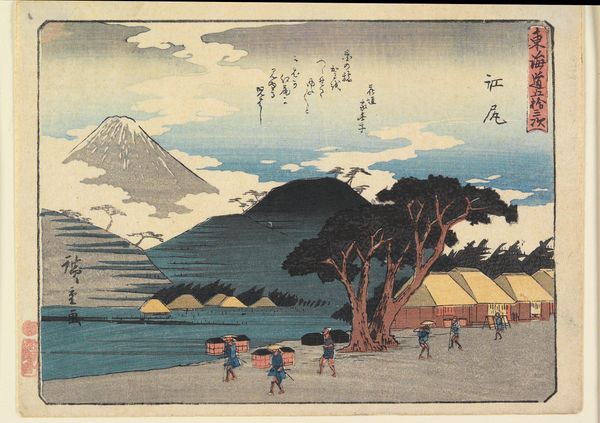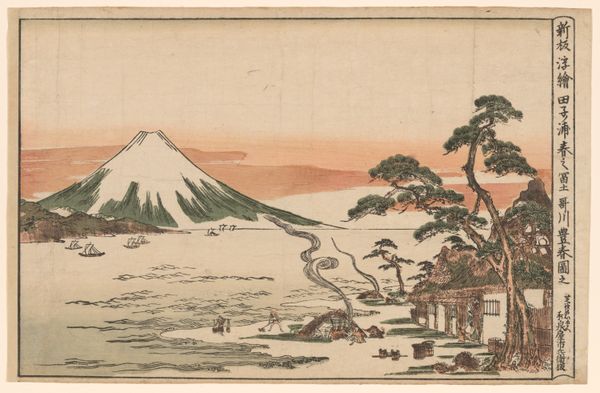
print, ink, woodblock-print
# print
#
asian-art
#
landscape
#
ukiyo-e
#
japan
#
ink
#
woodblock-print
#
orientalism
Dimensions: 6 1/2 x 9 in. (16.5 x 22.8 cm) (image)6 1/2 x 9 in. (16.5 x 22.8 cm) (sheet, trimmed)
Copyright: Public Domain
Curator: The print before us is titled "No.Kanbara," created between 1847 and 1852 by Utagawa Hiroshige. It’s a woodblock print, showcasing the ukiyo-e style. Editor: It has a very dreamlike quality to it. The blues are so gentle, and the landscape fades hazily into the background. There's a real sense of serenity, despite the presence of human activity. Curator: Yes, the symbolism here is interesting. Water in Japanese art often represents fluidity, change, but also purification. The figures in boats hint at journeys, both physical and spiritual. Look closely at the mountain, its looming presence... Editor: It feels like a constant, an anchor amidst the water's flow. I’m particularly drawn to how the figures are rendered. They’re small, almost anonymous, which to me speaks to the common experience of travel, pilgrimage, or even forced migration during this period. The journey has an everyman quality. Curator: Exactly. It embodies the idealized journey, and also taps into something quite personal: the journey of the soul through shifting landscapes and periods of transition. Ukiyo-e often references fleeting beauty but can evoke the permanence of nature's spiritual essence, such as the prominent mountain backdrop. Editor: And the soft colours work effectively with the themes. Those muted oranges in the top left, hinting at either sunset or dawn. Are the figures beginning their day or ending it? The temporal ambiguity creates a compelling liminal space. Also note the stark difference in how Mount Fuji is represented, smaller and almost serene unlike the rugged looking terrain surrounding it, this might speak to Japan’s increasing openness to the outside world... a double sided message? Curator: It speaks volumes to the Shinto tradition. The woodblock technique here also carries symbolic weight. Each carve, each color applied meticulously, mimics life's incremental layers. Editor: Indeed. The print makes you wonder about the role of landscapes in shaping identity and culture. It’s so much more than a pretty picture of nature. Curator: I see it as a convergence of the individual journey and timeless symbolism. There are layers that reward the contemplative eye. Editor: A lovely reflection—a serene moment frozen in time that urges us to examine movement and transitions on multiple levels, personal, societal, environmental.
Comments
No comments
Be the first to comment and join the conversation on the ultimate creative platform.
